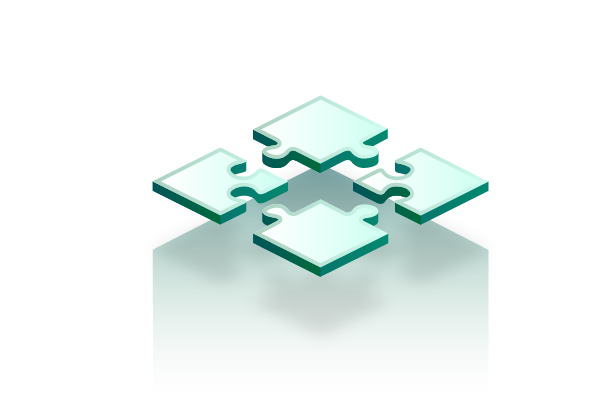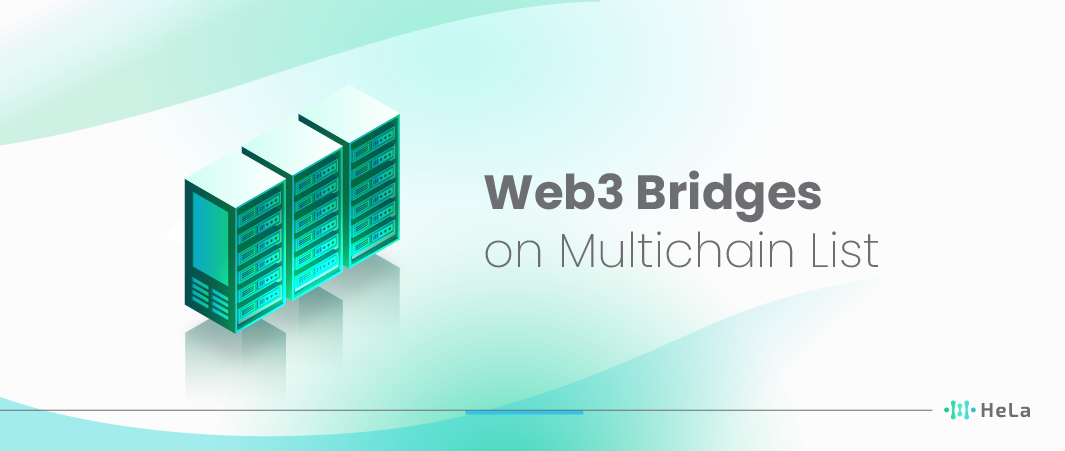The landscape of Web3 is constantly evolving, and with it, the tools and libraries that developers rely on. In this guide, we will navigate through the top Web3 libraries that have stood out in 2026, providing an invaluable resource for developers aiming to build robust, efficient, and user-friendly blockchain applications.
We’ll delve into not just the list of best Web3 libraries but also touch upon how these libraries integrate with the broader Web3 ecosystem. From smart contract development to seamless user interfaces, each library offers unique features and deserves consideration in your next blockchain project. Let’s embark on this journey to explore the best Web3 libraries of 2026 and how they can shape the future of decentralized applications.
Understanding Web3 Libraries
Web3 libraries serve as the essential building blocks in the realm of blockchain development, enabling developers to create and manage decentralized applications (dApps) that operate on blockchain technology. These libraries provide an assortment of tools and frameworks that simplify the interaction between the user interfaces of applications and the underlying decentralized blockchain networks.
This interaction is crucial because blockchain technology, by its nature, is complex and not inherently designed for direct engagement with end-users. Web3 libraries abstract this complexity, offering developers a more accessible and manageable means to build, deploy, and interact with smart contracts and other blockchain features.
In essence, Web3 libraries act as intermediaries. They translate the actions and commands from a user-friendly application into the cryptographic and transactional language understood by a blockchain network. This includes functions such as executing smart contracts, handling transactions, and querying blockchain data.
The significance of these libraries in blockchain development cannot be overstated. They not only empower developers to bring the innovative features of blockchain technology to mainstream applications but also ensure that these applications maintain the principles of decentralization, security, and transparency inherent to blockchain technology.
Also Read: Updated List of Web3 Bridges on Multichain for 2025
In summary, understanding Web3 libraries is pivotal for developers venturing into the blockchain space. These libraries provide the necessary infrastructure to bridge the gap between the sophisticated world of blockchain and the user-centric domain of applications, facilitating a seamless, efficient, and secure interaction between the two. This is why the choice of a Web3 library is a critical decision for developers aiming to deliver robust and user-friendly dApps.
Criteria for Selecting Web3 Libraries

Choosing the right Web3 library is a multifaceted decision that requires a thorough evaluation of various factors to ensure it aligns well with the project’s needs and the team’s capabilities. Here are the key criteria that should guide the selection process:
- Community Support and Ecosystem: A robust community indicates active development and support, which is vital for addressing bugs, receiving updates, and accessing a wealth of shared knowledge. Libraries with a strong ecosystem often have a plethora of plugins and extensions, making them highly versatile.
- Quality of Documentation: Well-organized, clear, and comprehensive documentation is essential. It not only facilitates a smoother onboarding process for developers but also serves as a reliable reference throughout the development lifecycle, helping to minimize roadblocks and downtime.
- Feature Set and Capabilities: The library should offer a comprehensive set of features that align with the project’s objectives. This includes compatibility with various blockchain protocols, support for smart contract interactions, transaction handling, and any other specific functionalities the project may require.
- Ease of Use and Developer Experience: A user-friendly library with intuitive design and clear abstractions can significantly reduce the learning curve and development time. Libraries that prioritize developer experience often lead to more efficient coding, debugging, and maintenance.
- Performance and Scalability: Evaluate the library’s performance metrics and ensure it can efficiently handle the application’s load. Scalability is crucial for future growth; the library should be able to accommodate an increasing number of transactions or interactions without significant drops in performance.
- Security Features and Track Record: Given the importance of security in the Web3 space, it’s crucial to assess the library’s security measures and its history concerning vulnerabilities. Libraries with a strong focus on security and a good track record can provide a more robust foundation for your project.
- Compatibility and Interoperability: Ensure that the library is compatible with the tech stack you are using or plan to use. Additionally, its ability to interact seamlessly with other systems, tools, or libraries can be a significant advantage.
- Licensing and Cost Implications: Understand the licensing terms to ensure they align with your project’s needs and budget. Some libraries may have restrictions or costs associated with commercial use that could impact your project.
By thoroughly assessing each of these factors, you can select a Web3 library that not only meets your current requirements but also positions your project for success as it evolves and grows.
10 Best Web3 Libraries to Know in 2026

In 2026, the Web3 development landscape is more vibrant and diverse than ever, with a wide array of libraries offering powerful functionalities to developers. These libraries are pivotal in shaping the future of decentralized applications, providing the necessary tools and frameworks to build robust, innovative, and user-friendly DApps. Below is an in-depth look at each of the prominent Web3 libraries that have made a significant impact in 2026:
1. Ankr
Ankr emerges as an all-in-one Web3 development hub, offering a full suite of tools to build and manage Web3 apps efficiently. It’s a powerhouse for developers looking to work across multiple blockchain ecosystems.
- Features: With support for numerous chains including Ethereum, Polygon, and more, Ankr provides a versatile platform for deploying applications. Its infrastructure tools and services are designed to enhance the scalability, security, and performance of DApps.
- Community and Support: Ankr benefits from a strong community presence and extensive documentation, ensuring developers have the resources they need to leverage the platform effectively.
2. libp2p
As a modular set of networking tools, libp2p is instrumental in building peer-to-peer applications. It’s known for its adaptability, allowing developers to create robust P2P networks tailored to their specific needs.
- Features: The framework offers a range of discovery mechanisms, data storage/retrieval patterns, and is implementable in many programming languages. Its modularity and extensive transport configurability make it a top choice for building versatile and resilient P2P applications.
- Advantages: With its focus on security, robustness, and resiliency, libp2p is designed to withstand stress, disturbances, and changes, ensuring reliable peer discovery and communication within the Polkadot ecosystem and beyond.
3. light.js
Designed for light clients, light.js is a high-level reactive JavaScript library. It simplifies the interaction with Ethereum nodes, offering an efficient interface for developers.
- Features: The library is optimized for performance and ease of use, allowing developers to interact with blockchain data in a more streamlined and reactive manner.
- Usage: Although not as widely adopted as some other libraries, light.js is appreciated in specific use cases where lightweight and responsive interaction with Ethereum nodes is required.
4.vweb3j
web3j is a lightweight Java and Android library tailored for integration with Ethereum clients. It’s especially popular among developers in the Java ecosystem due to its simplicity and effectiveness.
- Features: The library offers a range of functionalities for interacting with smart contracts, handling transactions, and managing blockchain data, all while maintaining a minimal footprint.
- Community and Documentation: web3j benefits from a robust community and comprehensive documentation, making it accessible for both new and experienced developers in the Java and Android space.
5. web3.js
As one of the most popular Web3 libraries, web3.js is a TypeScript/JavaScript library enabling DApps to interact seamlessly with the Ethereum blockchain.
- Features: It offers a comprehensive set of functionalities, including support for smart contracts, transactions, and blockchain data interaction. The library is continually updated, ensuring compatibility with the latest Ethereum features.
- Community Support: web3.js has a vast and active community, with abundant resources, tutorials, and forums available for developers. This strong community support contributes to its widespread adoption and ongoing development.
6. Web3.py
Web3.py is the Python counterpart to web3.js, offering similar functionalities for interacting with Ethereum and other EVM-compatible blockchains.
- Features: It provides a comprehensive set of tools for working with smart contracts, handling transactions, and accessing blockchain data, all tailored for the Python environment.
- Community and Resources: With extensive documentation and a supportive community, Web3.py is a preferred choice for Python developers entering the Web3 space.
7. ethers.js
ethers.js stands out for its compactness and comprehensive feature set, making it a go-to JavaScript library for interacting with the Ethereum blockchain.
- Features: Despite its compact size, ethers.js provides full functionality for DApp development, including support for smart contracts, transactions, and blockchain interaction.
- Documentation and Usability: The library is known for its ease of use and extensive documentation, making it a favorite among developers who require a complete, yet streamlined, toolset for Ethereum-based development.
8. Whal3s
Whal3s is a developer platform focused on simplifying the creation, delivery, and management of token utilities. It supports a range of chains, making it a versatile tool for token management and DApp development.
- Features: The platform offers a variety of tools and services to streamline the process of token creation, distribution, and management, catering to the needs of developers working on token-centric projects.
- Flexibility and Support: With support for chains like Ethereum, Polygon, and EVM, Whal3s provides a flexible and robust environment for developers to innovate and manage token utilities effectively.
9. Etherspot TransactionKit
Etherspot TransactionKit is acclaimed as the world’s first React library for quick and straightforward Web3 development, simplifying the process of managing transactions across multiple chains.
- Features: The library provides a set of tools and functionalities specifically designed for React developers, focusing on ease of use, speed, and simplicity in Web3 development.
- Community and Resources: With its innovative approach to React-based Web3 development, Etherspot TransactionKit has garnered attention and support from the developer community, offering comprehensive resources and documentation to facilitate adoption.
10. Moralis Streams API
The Moralis Streams API represents a cutting-edge addition to the Web3 space, offering a superior solution for real-time blockchain data integration. It’s designed to empower developers to seamlessly stream on-chain events directly to their applications, ensuring that DApps are always synced with the blockchain.
- Real-Time Data Streaming: The Streams API provides real-time data directly from the blockchain to the DApp, facilitating immediate responsiveness and interaction based on on-chain events.
- Simplicity in Integration: With straightforward integration steps, developers can effortlessly incorporate the Streams API into their projects, reducing the complexity traditionally associated with blockchain data handling.
- Extensive Documentation and Tutorials: Moralis provides comprehensive documentation and step-by-step guides, making the Streams API accessible to developers of all expertise levels.
- Efficient Data Management: Developers can tailor the data streams to their specific needs, ensuring that their applications receive only the most relevant and up-to-date information.
- Wide Range of Use Cases: From gaming to finance, the Streams API is versatile enough to support a plethora of DApp categories, making it a go-to solution for a wide spectrum of Web3 projects.
- Community and Support: The robust Moralis community and support infrastructure offer developers a platform to discuss, learn, and troubleshoot, fostering a collaborative environment for Web3 development.
- Case Study and Usage: Moralis showcases the power of the Streams API through various case studies, illustrating how developers can leverage the API to reduce development time, streamline data handling, and create more dynamic and interactive DApps. The API’s flexibility and efficiency are particularly highlighted when compared to traditional methods of interacting with blockchain data
These Web3 libraries, with their rich features, extensive community support, and adaptability across various programming languages and blockchain networks, are instrumental in driving the development and innovation in the decentralized application space in 2024.
Integration and Compatibility

Integration and compatibility are crucial considerations when selecting a Web3 library for blockchain development. This is not merely about the standalone functionalities that the library offers but also about how seamlessly it fits into the broader Web3 ecosystem, comprising various blockchain networks, smart contract languages, and development tools.
Compatibility with Blockchain Networks
Different Web3 libraries may offer varying levels of support for popular blockchain networks such as Ethereum, Binance Smart Chain, or Polkadot. It’s important to ensure that the library you choose can interact efficiently with the blockchain network your project is targeting. This includes support for network-specific features, consensus mechanisms, and transaction handling.
Integration with Smart Contract Languages
Smart contracts are pivotal in the blockchain space, and they are predominantly written in languages such as Solidity or Vyper for Ethereum. A Web3 library should ideally provide robust tools and frameworks that facilitate the deployment, interaction, and testing of smart contracts written in these languages. This can significantly expedite the development process and reduce the scope for errors.
Synergy with Development Tools and Frameworks
The development of decentralized applications (dApps) often involves a suite of tools and frameworks, ranging from front-end libraries like React or Angular to blockchain development environments like Truffle or Hardhat. A Web3 library that integrates well with these tools can simplify the development workflow, enabling features like automated testing, smart contract compilation, and dApp deployment.
Support for Advanced Features and Standards
As the blockchain space evolves, new standards and features emerge, such as ERC-721 for non-fungible tokens (NFTs) or Layer 2 scaling solutions. A forward-compatible Web3 library that keeps pace with these advancements ensures that your projects remain relevant and can leverage the latest technologies in the blockchain domain.
Community and Ecosystem Support
A Web3 library backed by a strong community and ecosystem can offer additional benefits like comprehensive documentation, active forums, and a plethora of plugins or extensions. This not only makes the development process smoother but also ensures that the library is well-maintained and updated in line with the latest industry trends.
In essence, the integration and compatibility of a Web3 library with the broader ecosystem are as vital as its individual features. A library that excels in these areas can significantly enhance the efficiency, scalability, and future-proofing of your blockchain projects, allowing you to build more complex, secure, and innovative dApps.
Also Read: What Is Multichain Wallet? Benefits and Development
Future of Web3 Libraries
The future of Web3 libraries is unfolding as a horizon brimming with transformative potential, driven by relentless innovation and a strong foundation of community-led development. These libraries stand at the cusp of a new era, poised to undergo significant evolution in response to the rapidly changing landscape of blockchain technology. In this section, we aim to offer an in-depth exploration of the emerging trends that are shaping the future of Web3 libraries. Our focus extends beyond the current state of these libraries, venturing into the realm of potential advancements and the introduction of pioneering features that promise to redefine the standards of decentralization and user empowerment.
As we delve into the future prospects of Web3 libraries, we also seek to understand how they are preparing to adapt to the increasingly complex demands of the blockchain ecosystem. This discussion is not just about technological evolution but also about the strategic foresight that is guiding these libraries towards a more resilient and versatile future.
By examining how Web3 libraries are aligning with the broader objectives of the blockchain community, we shed light on the pivotal role they play in facilitating a more secure, transparent, and user-centric digital landscape.
Conclusion
The world of Web3 is dynamic, and the tools and libraries that power it are no less. The libraries listed in this guide are not just tools but gateways to the vast potential of blockchain technology. As we navigate through 2026 and beyond, these Web3 libraries are set to play a pivotal role in shaping the future of decentralized applications.
Selecting the right Web3 library is a decision that holds immense significance. It’s about aligning with a library that not only meets your current needs but also grows with your project, supporting it through every stage of development. With the insights provided in this guide, developers are better equipped to make informed decisions, laying a strong foundation for their blockchain projects.
As we continue to witness the evolution of the Web3 landscape, the importance of staying updated and adaptable cannot be overstated. The best Web3 libraries of 2026 are more than just a list; they’re a testament to the vibrant, ever-evolving community of developers, innovators, and visionaries who are driving the future of decentralized applications. Embrace these tools, and be a part of this transformative journey.
Disclaimer: The information provided by HeLa Labs in this article is intended for general informational purposes and does not reflect the company’s opinion. It is not intended as investment advice or recommendations. Readers are strongly advised to conduct their own thorough research and consult with a qualified financial advisor before making any financial decisions.

Joshua Soriano
I am a writer specializing in decentralized systems, digital assets, and Web3 innovation. I develop research-driven explainers, case studies, and thought leadership that connect blockchain infrastructure, smart contract design, and tokenization models to real-world outcomes.
My work focuses on translating complex technical concepts into clear, actionable narratives for builders, businesses, and investors, highlighting transparency, security, and operational efficiency. Each piece blends primary-source research, protocol documentation, and practitioner insights to surface what matters for adoption and risk reduction, helping teams make informed decisions with precise, accessible content.
- Joshua Soriano#molongui-disabled-link
- Joshua Soriano#molongui-disabled-link
- Joshua Soriano#molongui-disabled-link
- Joshua Soriano#molongui-disabled-link

